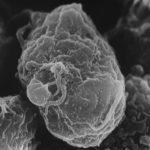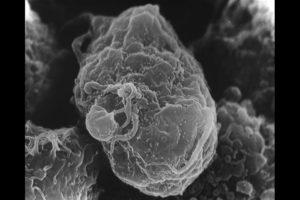Although there are numerous antibodies that target HIV, there is no antibody that has been discovered that is able to neutralize all the globally circulating variants of the virus. Therefore, it is important to isolate and characterize more of these antibodies in order to increase the arsenal of antibodies which target the virus. This study identified broad and potent antibodies from individuals from India who are infected with the subtype C strain of HIV. They were able to identify antibodies with multiple targets on the HIV Envelope (Env).
HIV infected individuals develop neutralizing antibody responses after approximately 3 months of infection. In chronic infection, some HIV infected individuals develop broadly neutralizing antibody (bnAb) responses. These antibodies are able to neutralize a diverse array of HIV strains. Unfortunately, some studies have shown that having bnAbs does not improve an HIV-infected individuals prognosis as the virus from that person rapidly escapes neutralization by the bnAb present.
BnAbs target the HIV Env at 5 specific sites: the CD4 binding site, V2/apex, V3/glycans, gp120-gp14 interface and the membrane proximal external region (MPER). Although numerous antibodies towards each of these sites have been isolated, no antibody-based vaccine has been successful to date. Since subtype C is responsible for most of the HIV infections worldwide, the team of researchers, from the National Institute for Research in Tuberculosis in India, aimed to identify more bnAbs from subtype C HIV infected individuals.
The scientists screened plasma samples from 88 individuals with HIV. The participants were between the ages of 22 and 53. The had a median viral load of 26,212 copies/ml. The 88 samples were screened against a panel of 6 neutralization-sensitive viruses. 58 samples neutralized 4 or more of the viruses and were then tested against 6 moderately neutralization-resistant viruses. From this, 30 samples neutralized 4/6 or more viruses and those were tested against 6 neutralization-resistant viruses. 12 viruses neutralized 4 or more of these highly resistant viruses and were the ones considered to contain bnAbs. These 12 samples were labelled as “potent” because they were able to neutralize viruses at very low dilutions. The samples were also found to have bnAbs targeting different epitopes on the HIV Env.
Altogether, this study has identified more bnAbs from subtype C HIV-infected individuals in India. These samples contain bnAbs targeting the major epitopes on the HIV Env. The next step for these researchers will be to isolate monoclonal antibodies from these samples to further analyze their characteristics.
Article by Thandeka Moyo

